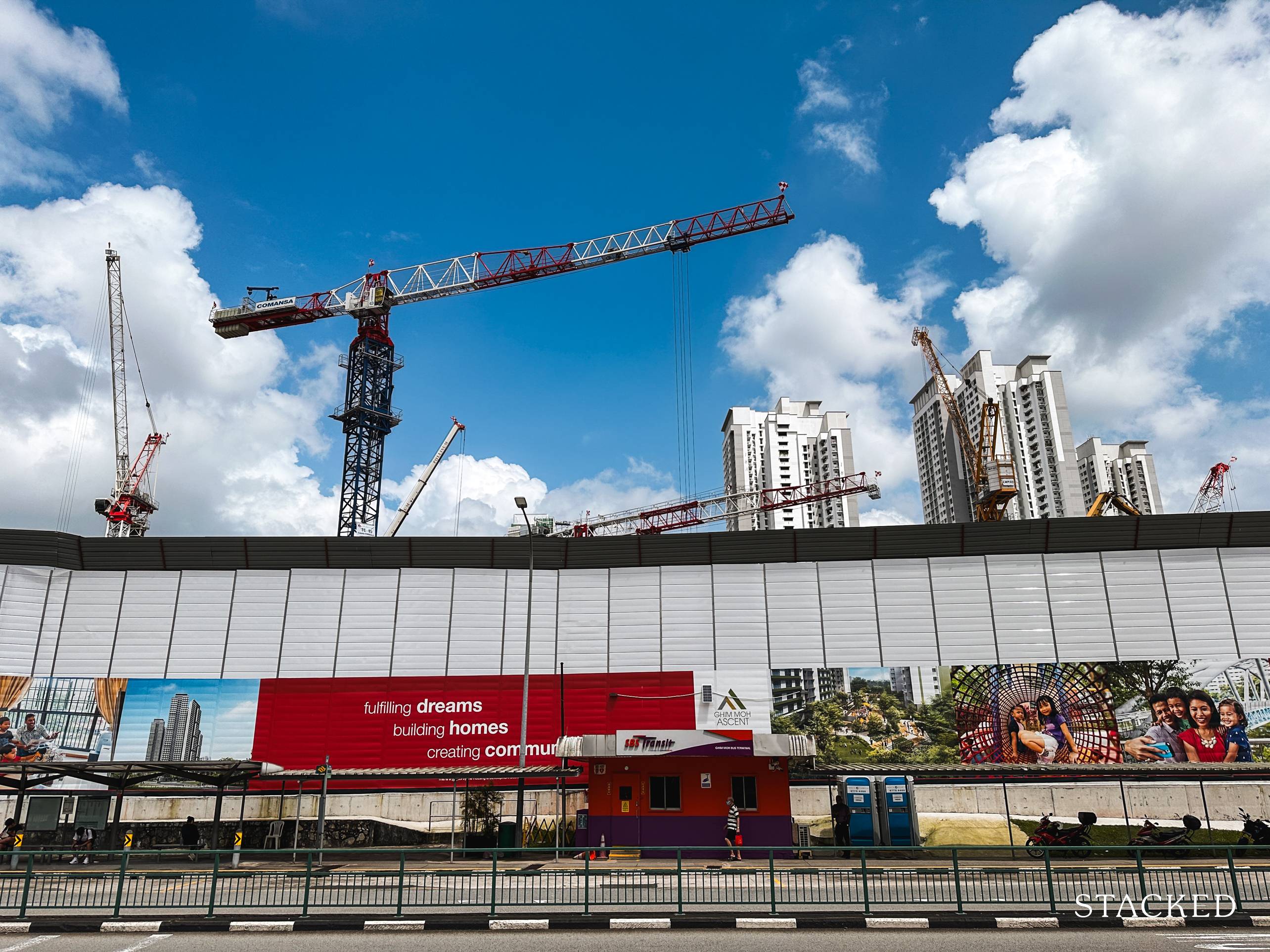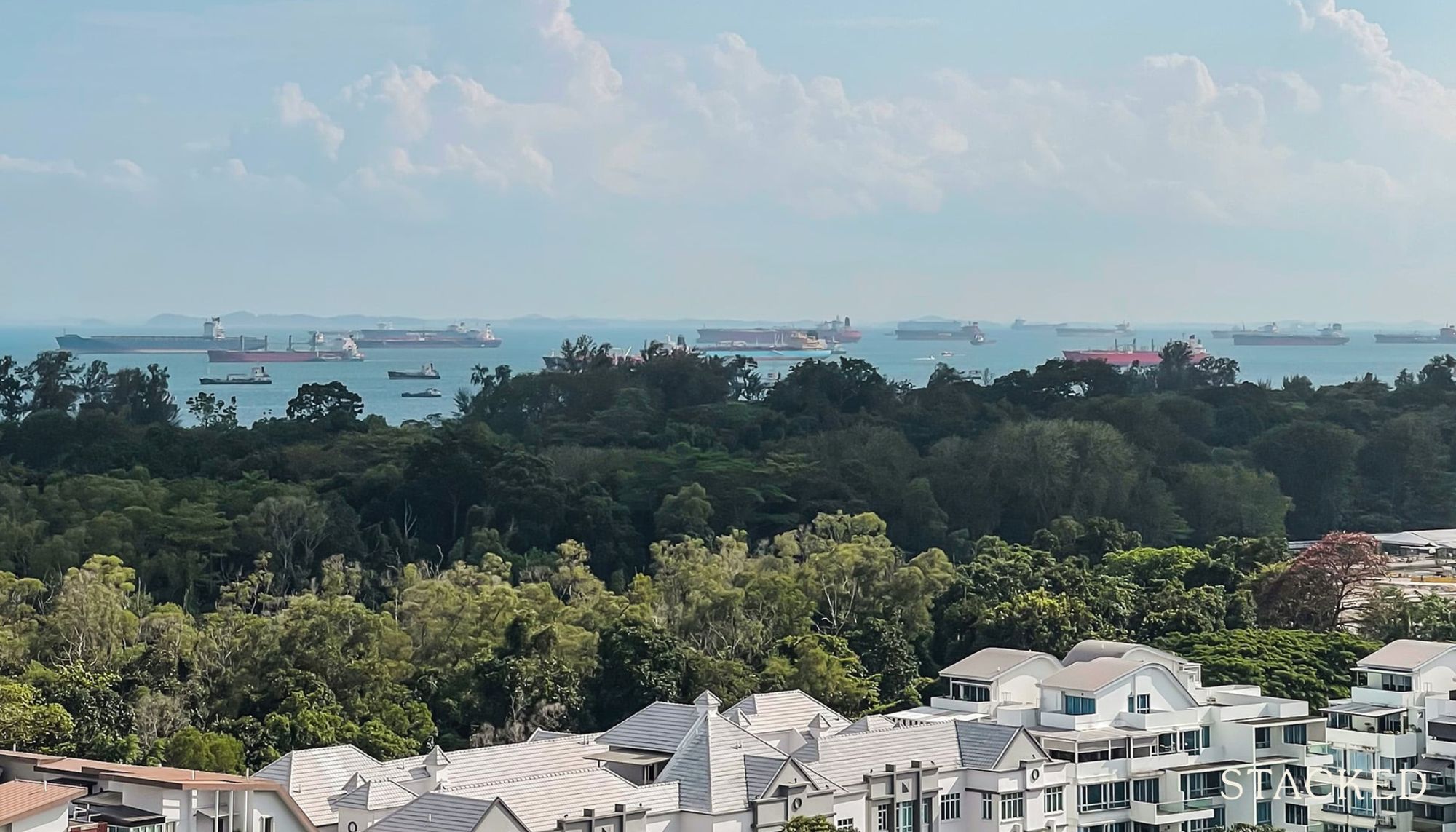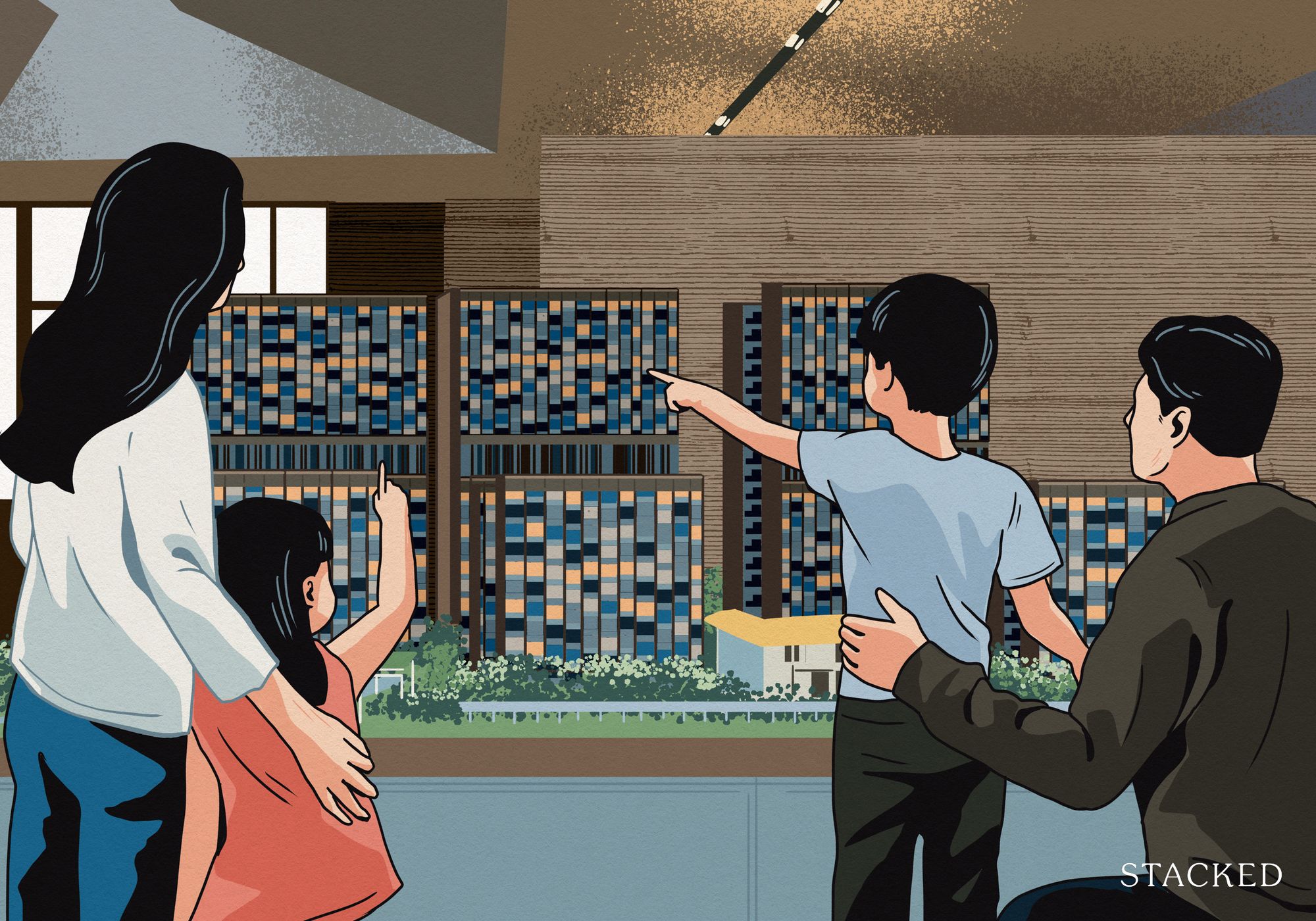October 2024 BTO Breakdown: Prime And Plus Projects Revealed (And Key Details To Note)

Get The Property Insights Serious Buyers Read First: Join 50,000+ readers who rely on our weekly breakdowns of Singapore’s property market.
A seasoned content strategist with over 17 years in the real estate and financial journalism sectors, Ryan has built a reputation for transforming complex industry jargon into accessible knowledge. With a track record of writing and editing for leading financial platforms and publications, Ryan's expertise has been recognised across various media outlets. His role as a former content editor for 99.co and a co-host for CNA 938's Open House programme underscores his commitment to providing valuable insights into the property market.
The October 2024 BTO launch is just around the corner as we write this, and it’s one of the most significant in recent years. This will be the first launch using the new classification system, where flats are divided into Standard, Plus, and Prime categories. The launch will involve 15 HDB projects, of which seven are under the Plus category, and one is Prime. Here’s what you can expect:
The upcoming BTO sites
A quick note: we’ve already covered the sites in a previous article; but at the time we didn’t have a confirmed statement of which sites were Standard, Plus, or Prime. This is the current breakdown of flat numbers in each category. Note that the numbers are BTO launch estimates, so the exact numbers may differ slightly during the actual launch:
Crawford Heights (Prime, Kallang/Whampoa)
| 3-room | 4-room |
| 80 | 230 |
Kallang View (Plus, Kallang/Whampoa)
| 3-room | 4-room |
| 70 | 200 |
Tower Breeze (Plus, Kallang/Whampoa)
| 2-room | 4-room |
| 140 | 220 |
Central Trio @ AMK (Plus, Ang Mo Kio)
| 2-room | 4-room |
| 160 | 270 |
Bayshore Vista (Plus, Bedok)
| 2-room | 3-room | 4-room |
| 200 | 80 | 450 |
Bayshore Palms (Plus, Bedok)
| 2-room | 4-room |
| 160 | 550 |
Kembangan Wave (Plus, Bedok)
| 2-room | 4-room |
| 110 | 230 |
Merpati Alcove (Plus, Geylang)
| 2-room | 4-room |
| 260 | 160 |
West BrickVille (Standard, Bukit Batok)
| 2-room | 3-room | 4-room | 5-room | 3Gen |
| 130 | 90 | 260 | 170 | 40 |
Taman Jurong Skyline (Standard, Jurong West)
| 2-room | 3-room | 4-room | 5-room | 3Gen |
| 550 | 120 | 590 | 500 | 80 |
Costa Riviera I (Standard, Pasir Ris)
| 3-room | 4-room |
| 90 | 190 |
Costa Riviera II (Standard, Pasir Ris)
| 2-room | 4-room | 5-room | 3Gen |
| 140 | 200 | 110 | 30 |
Fernvale Oasis (Standard, Sengkang)
| 2-room | 4-room | 5-room |
| 180 | 340 | 320 |
Fernvale Sails (Standard, Sengkang)
| 2-room | 3-room | 4-room | 5-room |
| 130 | 90 | 220 | 110 |
Marsiling Ridge (Standard, Woodlands)
| 4-room | 5-room |
| 160 | 130 |
You’ll notice that this is a very high number of flats and locations for a single BTO launch (around 3,270 units). Indeed, the flats offered during the October launch will constitute around 40 per cent of the entire BTO supply for 2024, and it’s one of the biggest single launches we’re likely to see in some time.
Some interesting details about the Plus and Prime sites:
- 1. It’s possible to have Plus and Prime flats in the same town, in the same launch
- 2. In future, “Prime” may not just be based on proximity to the city centre
- 3. For now, there’s little difference besides the SR, between Plus and Prime
- 4. A cap on price growth due to the income ceiling and MSR
- 5. No fixed numbers on Plus or Prime offerings each year
1. It’s possible to have Plus and Prime flats in the same town, in the same launch
Crawford Heights, Tower Breeze, and Kallang View are all within Kallang/Whampoa, but they have different classifications. This is based on access to different levels of amenities: as we mentioned in our previous article, Crawford Heights – being close to North Bridge Road, Haji Lane, etc. – snags a Prime classification, while Kallang View and Tower Breeze are “only” Plus category flats.

This could, however, prompt arguments about how the lines are drawn. Deciding where the amenities are “superior” is not always obvious (especially in more mature towns, where almost everywhere is convenient in its own way). So when Plus and Prime offerings appear in the same town, we think buyers are going to ponder whether the premium for Prime flats is justified.
2. In future, “Prime” may not just be based on proximity to the city centre
More from Stacked
A Fight Over The Sale Of An HDB Flat: 3 Interesting Takeaways From A Co-ownership Tussle
In recent news, we’ve heard of the struggle between a widow and her brother-in-law, over an HDB flat. Her husband…
To date, we’ve made the assumption that the main difference between Plus and Prime is that Plus flats might be the hub of fringe neighbourhoods, whereas Prime refers to the city centre; it’s an assumption shared by many of the realtors or analysts we’ve spoken to as well.

But it turns out this isn’t a rule per se. For now, the Prime projects are the ones which are closer to the city centre. In the future, however, there’s a possibility that we’ll see Prime housing even in non-central areas. This reflects quite a lot of confidence in decentralisation; and it’ll be interesting to see how we justify the differences between Plus and Prime in an area like, say, Punggol in the distant future.
(Our guess: it will mainly come down to market rates of surrounding flats, more so than a qualitative assessment of amenities; although the two are interrelated).
3. For now there’s little difference besides the SR, between Plus and Prime
The various restrictions, such as an income ceiling on resale buyers, 10-year MOP, inability to rent out the whole flat, etc. apply to both Plus and Prime. The main difference boils down to price, and the Subsidy Recovery (SR).
(The SR is a clawback, implemented at the point of sale to compensate for the higher subsidies needed to make these flats affordable. The SR only applies to the first batch of owners).
Existing Prime projects have had an SR of nine per cent, and this will be the first time we see the SR of Plus flats. If it’s not too far below nine per cent, some buyers will likely shrug it off as irrelevant and go for the Prime option instead. From word on the ground, we’ve heard the SR for Plus flats may be around six per cent.
In any case, this was a smart move that keeps things simple for buyers. We hope it stays the same, as changing other conditions (e.g., eligibility requirements) between Plus and Prime would make an already complex system even tougher to comprehend.
Speaking of eligibility requirements…
4. A cap on price growth due to the income ceiling and MSR
Plus flats, like their Prime counterparts, impose a $14,000 a month income ceiling even on resale buyers. This is different from standard resale flats, where there’s no income ceiling at all.
The combination of the income ceiling, along with loan curbs like the Mortgage Servicing Ratio (MSR), is aimed at preventing enclaves of the rich from forming in HDB towns. This is intended to restrict the price growth of Plus as well as Prime flats, and create a balanced socioeconomic mix. It’s too early, however, to tell if this will work. On a psychological level, simply grouping the flats into Standard, Plus, and Prime is already a way to stratify the town.
5. No fixed numbers on Plus or Prime offerings each year
We’ve been told there’s no particular rule on the number of Plus or Prime offerings each year. It may even be possible for a year to go by with no such offerings, depending on the viability of the situation.
This is probably good for all of us, as it gives HDB more flexibility to build as needed. However, it also means you shouldn’t assume you’ll have another pick of Plus or Prime properties next year, next launch, etc.
At Stacked, we like to look beyond the headlines and surface-level numbers, and focus on how things play out in the real world.
If you’d like to discuss how this applies to your own circumstances, you can reach out for a one-to-one consultation here.
And if you simply have a question or want to share a thought, feel free to write to us at stories@stackedhomes.com — we read every message.
Ryan J. Ong
A seasoned content strategist with over 17 years in the real estate and financial journalism sectors, Ryan has built a reputation for transforming complex industry jargon into accessible knowledge. With a track record of writing and editing for leading financial platforms and publications, Ryan's expertise has been recognised across various media outlets. His role as a former content editor for 99.co and a co-host for CNA 938's Open House programme underscores his commitment to providing valuable insights into the property market.Read next from Singapore Property News

Singapore Property News More BTO Flats Are Coming In 2026 And Why This Could Change The HDB Market

Singapore Property News This HDB Just Crossed $1.3M For The First Time — In An Unexpected Area

Singapore Property News “I Never Thought I’d Be Sued by a Tenant.” What Long-Time Landlords in Singapore Miss

Singapore Property News HDB Resale Prices Finally Slowed in 2025 — Will It Continue in 2026?
Latest Posts

Pro Why This 24-Year-Old Condo Outperformed Its Newer Neighbours In Singapore

Editor's Pick We’re In Our 50s And Own An Ageing Leasehold Condo And HDB Flat: Is Keeping Both A Mistake?

Pro How A 625-Unit Heartland Condo Launched In 2006 Became One Of 2025’s Top Performers

Property Investment Insights Does Buying A One-Bedroom Condo Still Make Sense As An Investment In 2026

Property Market Commentary Why This Once-Ulu Town In Singapore Is Going To Change (In A Big Way)

Editor's Pick I Lived In Bayshore When It Was ‘Ulu’. Here’s How Much It Has Changed

On The Market Here Are The Cheapest 3-Bedroom Condos in Central Singapore You Can Still Buy From $1.15M

Property Market Commentary Why The Singapore Property Market Will Be Different In 2026 — And It’s Not Just About Prices

Editor's Pick 2025 Year-End Review Of The Singapore Property Market: What The Numbers Reveal

Pro This 21-Year-Old Condo Didn’t Sell Out Initially, Yet Became A Top Performer

Editor's Pick How The HDB Resale Market Performed In 2025, And What It Means For 2026 Prices

Editor's Pick 4 Key Trends Reshaping Singapore’s New Launch Condo Market In 2026

Editor's Pick What I Only Learned After My First Year Of Homeownership In Singapore

On The Market Here Are The Cheapest 4-Room HDB Flats in Central Singapore You Can Still Buy From $490K

Editor's Pick Should We Buy An Old 99-Year Leasehold Condo To Live In: Will It’s Value Fall When The Lease Runs Out?


